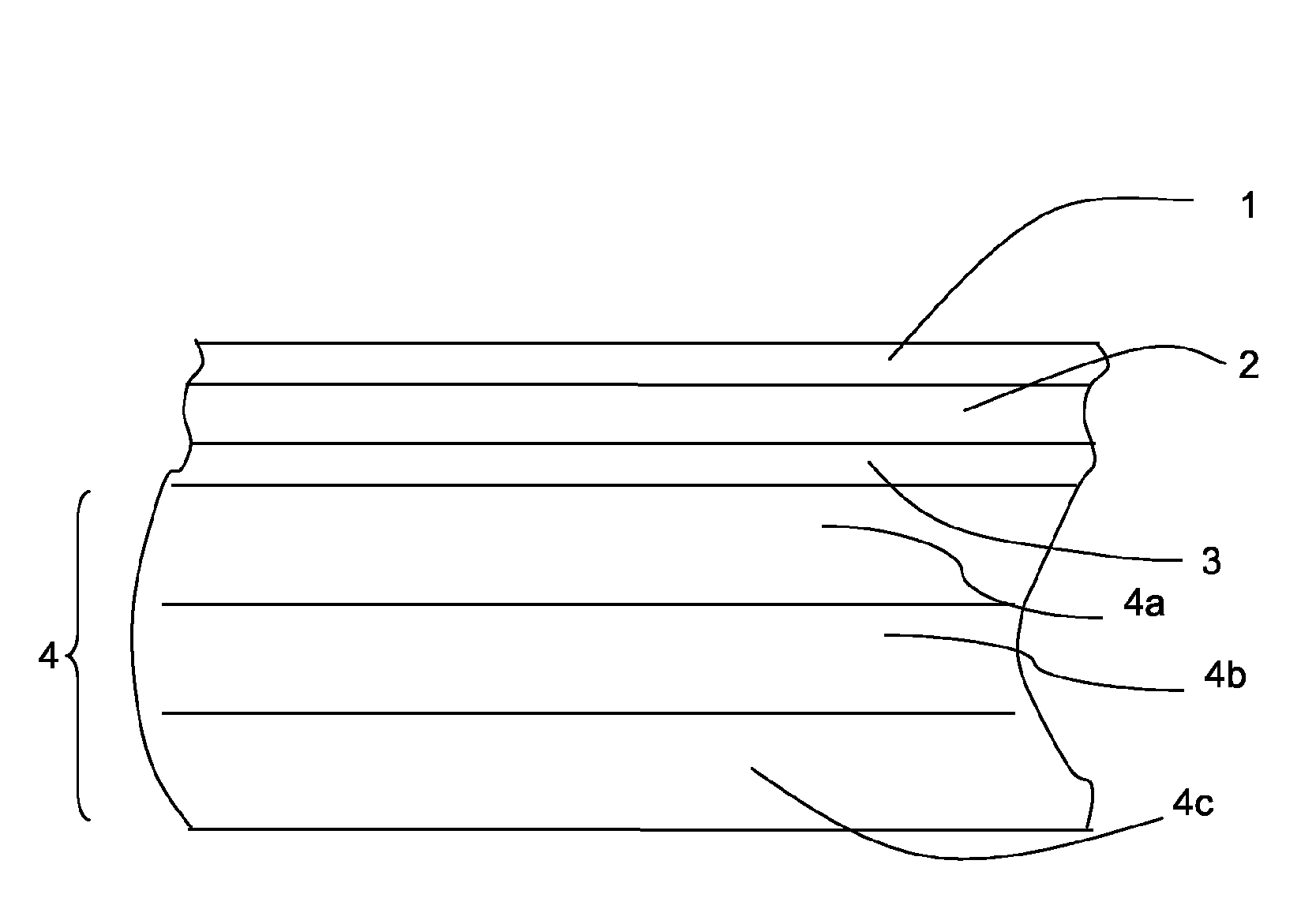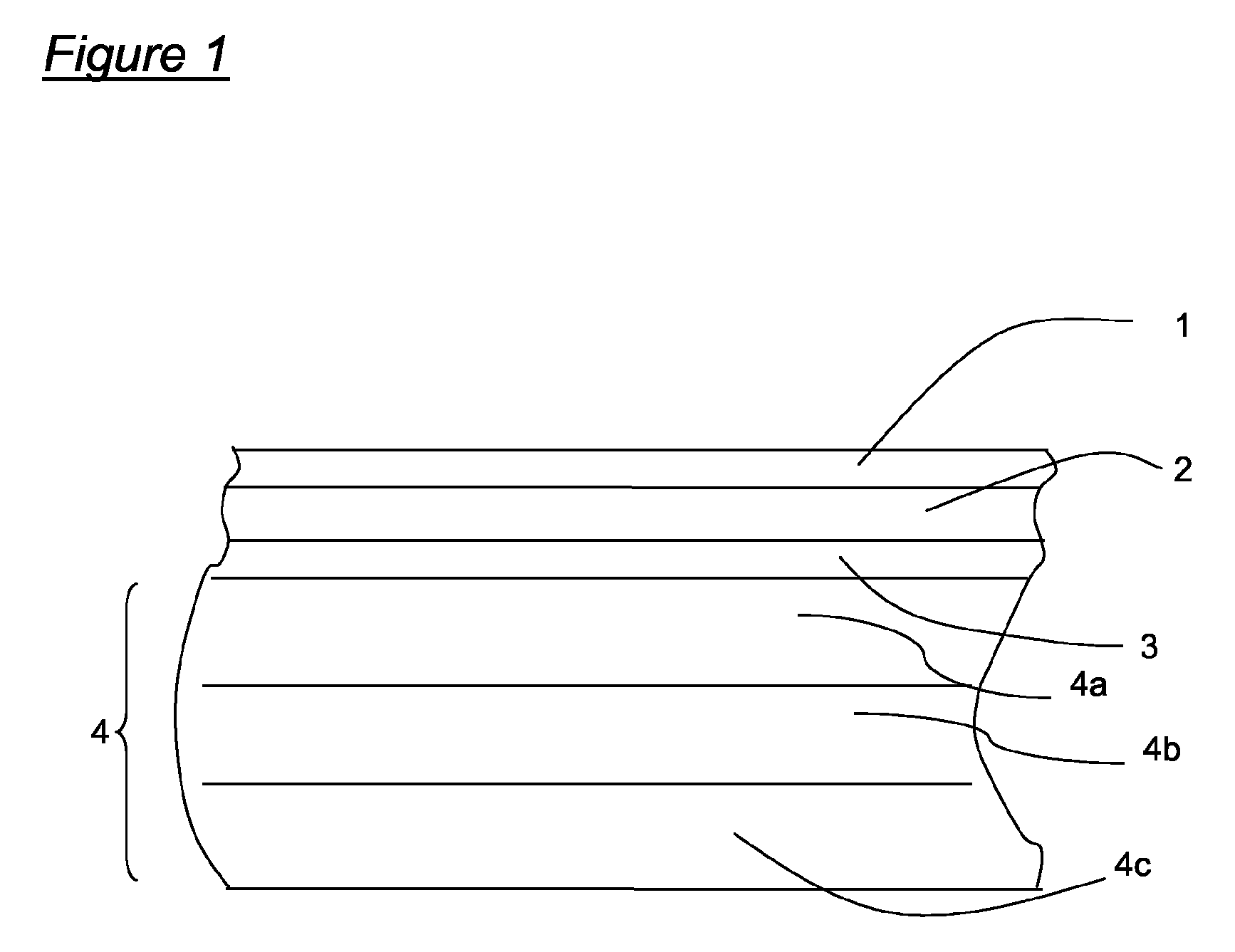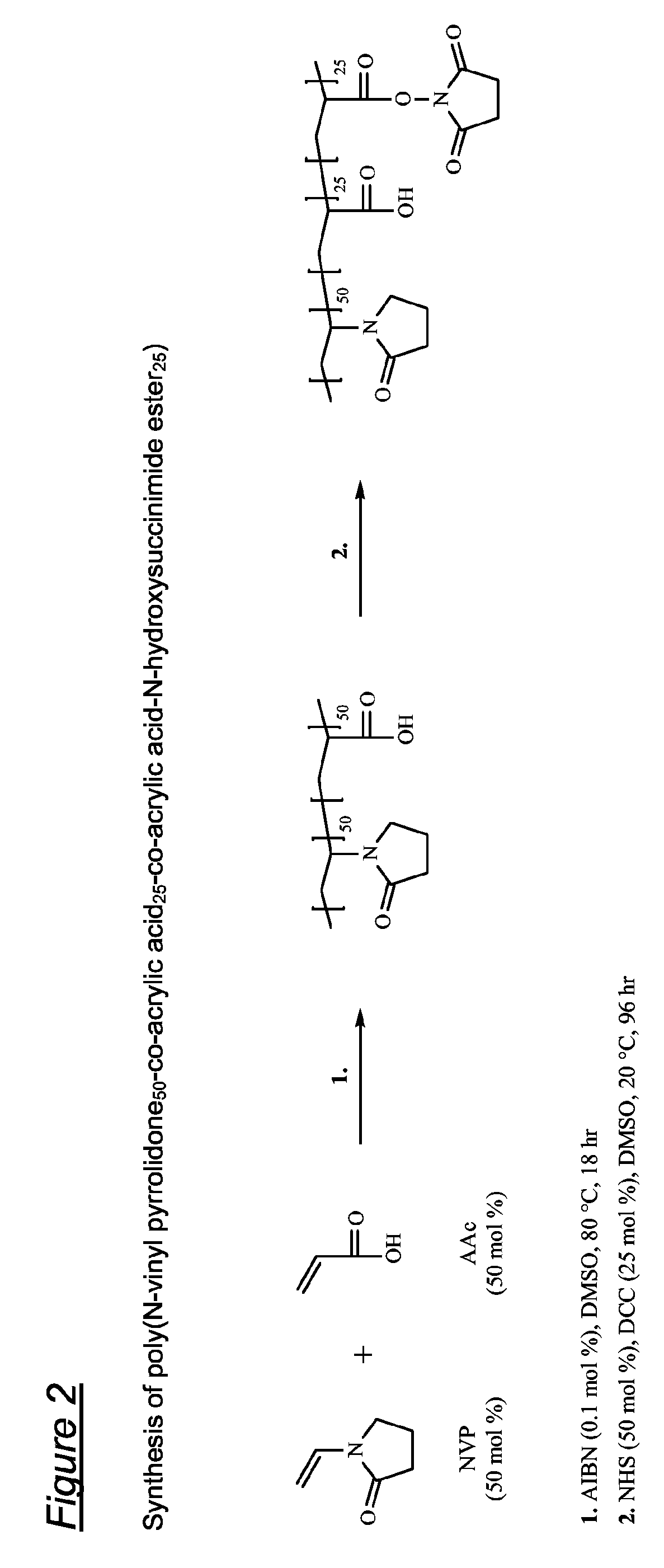Tissue-adhesive materials
a tissue adhesive and sheet technology, applied in the field of flexible sheets, can solve the problems of high adhesion between the sheet and the tissue surface, and achieve the effects of improving flexibility, good initial adhesion, and good adhesiveness
- Summary
- Abstract
- Description
- Claims
- Application Information
AI Technical Summary
Benefits of technology
Problems solved by technology
Method used
Image
Examples
example 1
Preparation of Multi-Lamellar Sheet
[0098]A multi-lamellar tissue-adhesive sheet according to the invention is shown schematically in FIG. 1. The sheet comprises a structural laminate and a tissue-contacting layer.
[0099]The structural laminate has the form of:[0100]a) a first layer 1 of PLGA;[0101]b) a second layer 2 of poly(VP-AAc-AAc(NHS)); and[0102]c) a third layer 3 of PLGA.
[0103]The tissue-contacting layer 4 is conjoined to the third layer 3 and comprises poly(VP-AAc-AAc(NHS)).
[0104]The first and third layers 1,3 each have a thickness of approximately 4 μm, and the second layer 2 a thickness of approximately 3 μm. The tissue-contacting layer 4 has a thickness of approximately 22 μm, and consists of three sub-layers 4a-c of approximately equal thickness.
[0105]The sheet is prepared as follows:
1.1 Preparation of Solutions
[0106]Three solutions are prepared as follows:[0107]Solution A is 10 g PLG dissolved in 100 ml DCM.[0108]Solution B is 7.5 g poly(VP-AAc-AAc(NHS)) dissolved in 100...
example 2
Alternative Preparation of Multi-Lamellar Sheet
[0119]A two-layer tissue-adhesive sheet according to the invention comprises a structural layer and a tissue-contacting layer.
[0120]The structural layer has the form of a single, first layer 1 of PLGA;
[0121]The tissue-contacting layer 2 is conjoined to the first layer 1 and comprises poly(VP-AAc-AAc(NHS)).
[0122]The first layer 1 has a thickness of approximately 15 μm. The tissue-contacting layer 2 has a thickness of approximately 22 μm.
[0123]The sheet is prepared as follows:
2.1 Preparation of Solutions
[0124]Three solutions are prepared as follows:[0125]Solution A is 10 g PLG dissolved in 100 ml DCM.[0126]Solution B is 10 g poly(VP-AAc-AAc(NHS)) dissolved in 100 ml DCM / MeOH 15 / 4.[0127]Solution C is 2.5 g methylene blue dissolved in 50 ml water.
2.2 Casting of Layer 1
[0128]Solution A is cast onto silicone backed release paper using a device referred to as a K bar. The film is dried for 30 minutes at 20° C. / atmospheric pressure. The film is...
example 3
[0133]The in vitro adhesive performance to liver of a sheet according to the invention has been quantified using a Zwick universal testing machine. After 5 minutes immersion in DPBS, the mean work of adhesion is typically 7 to 14 mJ.
PUM
| Property | Measurement | Unit |
|---|---|---|
| thickness | aaaaa | aaaaa |
| thickness | aaaaa | aaaaa |
| w/w | aaaaa | aaaaa |
Abstract
Description
Claims
Application Information
 Login to View More
Login to View More - R&D
- Intellectual Property
- Life Sciences
- Materials
- Tech Scout
- Unparalleled Data Quality
- Higher Quality Content
- 60% Fewer Hallucinations
Browse by: Latest US Patents, China's latest patents, Technical Efficacy Thesaurus, Application Domain, Technology Topic, Popular Technical Reports.
© 2025 PatSnap. All rights reserved.Legal|Privacy policy|Modern Slavery Act Transparency Statement|Sitemap|About US| Contact US: help@patsnap.com



